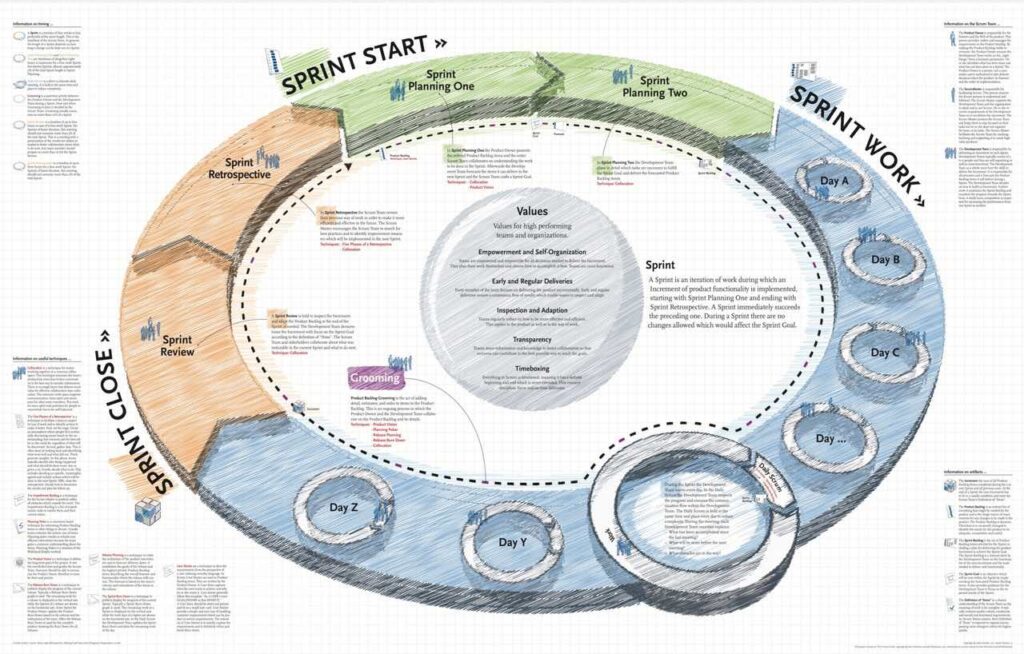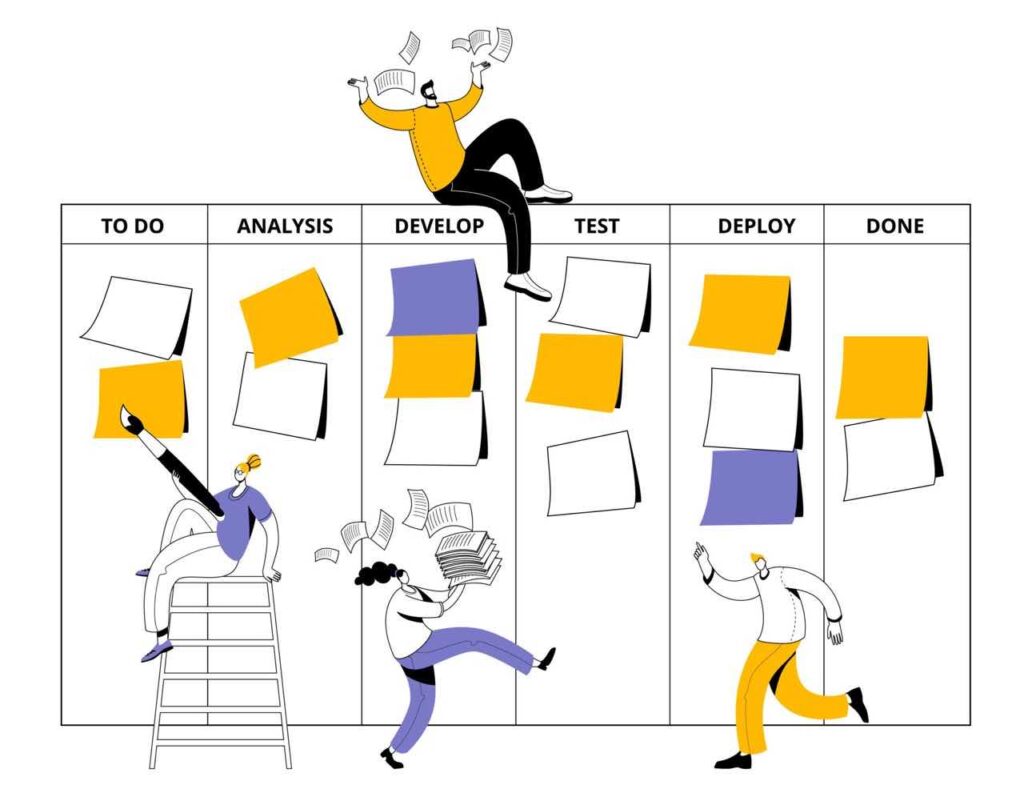Existing Scrum or Scrumban teams can benefit from Kanban. A customer report from outside IT shows how individual aspects of Kanban can improve a muddled situation.
Recently at the customer
"We make Scrumban." Of course things aren't going perfectly, otherwise I wouldn't be here as a coach.
What do I find here from Scrum? The roles Scrum Master and Product Owner are occupied in the controller team. There is a daily - but without a view of the Kanban board. I quickly understand why. It's too full and confusing. 71 cards "in progress". Another 40 or so as the current weekly target in the column next to it. It's easier to explain what's going on in the Daily free and without a board. There are retrospectives approximately every six months. The sprint length should be one week because there is a weekly vote on the weekly target. Sprints start - but do not end. I can't find some things that belong to Scrum.
What do I find in Kanban? A board. A real Kanban system was obviously not the goal here - none of the practices are used.
What does Scrum actually do?
Scrum is a framework that was developed specifically for product development. It is based on the idea that a team works in short iterations known as sprints.
Scrum promotes collaboration within the team and communication with the customer. There are fixed roles such as the Scrum Master and the Product Owner each with their own responsibilities.
Scrum provides clear structures and rules, which can help to keep the team on track and ensure that it focuses on the most important tasks.

And what does Kanban do?
What everyone knows about Kanban It is based, among other things, on the idea that work is presented visually. This allows the team to quickly recognize what needs to be done and what has already been done.
But Kanban is much more than just a board. Kanban is a Change management Method. Kanban has an understanding of evolutionary change in which unnecessary resistance should be avoided - for example by introducing new titles for people and meetings. A good Kanban system initially builds on the team's existing situation. Kanban promotes continuous improvement and the constant flow of work.

Reasons for a broken Scrum
In practice, we often come across customer teams that introduced Scrum some time ago but are no longer satisfied with the situation. There can be many reasons for this.
Perhaps the team's tasks have changed? The classic will be in the Posit Science Case Study of the Kanban University. It reports on a team that initially developed a product, which they managed very well with Scrum. As soon as the product was on the market, urgent requirements for rework, special customer requests, operation and maintenance were added - which the development team was no longer able to coordinate well in parallel to the new development with Scrum. As this case study is part of the training material of the Kanban Management Professional you can guess the solution.
Another reason why Scrum doesn't fit (anymore): Perhaps Scrum was never really the best solution for the team, but was introduced some time ago for reasons of uniformity within the company or because people didn't know any better. We then often find people with the titles "Scrum Master" and "Product Owner", the events become more irregular and less and less in line with the idea of the Scrum Guides Sprints are increasingly getting out of sync because the customer, the market or the situation demands it. And perhaps you are also familiar with a board with confusing piles of requests in the backlog and far too many cards being worked on in parallel. This situation is then often accompanied by external accusations that the team is not completing enough. Does this sound familiar to you?
And how can Kanban help my Scrum now?
Regardless of whether a team works according to Scrum or starts with the Kanban methodology, it is helpful to familiarize yourself with the STATICS approach and take a fresh look at the situation. STATIK (Systems Thinking Approach to Implementing Kanban) is an approach not only for the introduction of Kanban in organizations. It can also help to improve your Scrum.
To begin with, it is essential to identify the "sources of dissatisfaction". They represent the first step in STATIK and are to be understood as motivation for the resulting change. This is how you want to tackle the most important construction site. The next most important construction site is then tackled. Aha - Kanban's change principles have already crept in. "Start where you are and change in small steps".
Recently with the customer: Workshop on the sources of dissatisfaction
Unsurprisingly, great dissatisfaction with the board turns out to be the most important issue. In a simulation, the team experiences the difference between the current situation in the "clogged system" and working in a system with flow, less parallel work and more getting things done. And with more joy in the process.
The simulation allowed the team to experience the direct effect of working in a system with flow. This motivated them to directly change their own situation in real life.
The controller team decided on limits for quantities of parallel work, tidied up the Kanban board and redesigned it over time. Existing rules are made explicit to avoid further misunderstandings.
A process of continuous change begins. Every two weeks, we briefly talk about the Kanban system as a team - in one of the meetings that used to take place. I occasionally call it a flow review, but the invitation in the calendar is still the same as before. The Kanban system is stable and the metrics provide good suggestions for further improvements.
And a few months later, I ask again about the sources of dissatisfaction.
The answer: the greatest dissatisfaction now lies outside the board and is being dealt with bit by bit. By the way, there is still a Scrum Master and a Product Owner.
And how can things get better for me now?
Do you have a Scrum or Scrumban team and do some of the problems described sound familiar to you?
Take a look at your existing system with STATIK. The findings can improve your Scrum or call it into question. If the most important thing for you is that your team is flowing and delivering, this should hopefully be of secondary importance.
Would you like to help yourself and your team? You will learn the tools of the trade in the Kanban System Design Training.
Would you like to become a certified Kanban Management Professional become one? Then attend the Kanban Systems Improvement Training.
But Kanban can not only help your Scrum. It can also make your SAFe better. Read more about this in Julia's article "Kanban makes your SAFe better".
I also offer a meeting on the first Wednesday of every month. Kanban consultation hour to.

Write a comment